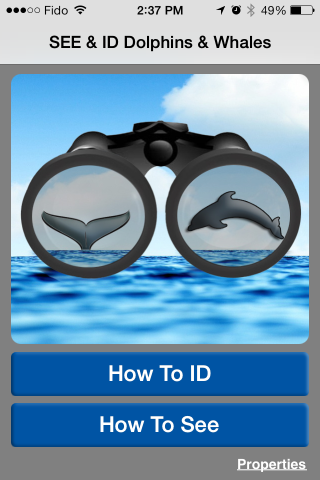NOAA Fisheries is using today’s modern technology to improve marine mammal conservation. They do so through the launch of 2 different smart phone apps.
The Dolphin & Whale 911 app was produced to enhance the accurate and timely reporting of stranded marine mammals in the Southearstern U.S. NOAA Fisheries has noticed over the years there is a general lack of awareness on how to report stranded marine mammals, which leads to delayed and inaccurate responses, compromising the animal’s chance of survival or limiting the amount of data that can be gathered from the already dead animals. NOAA Fisheries aims to facilitate the public’s response by providing valuable information on smartphones, including a colourful species identification guide, who to call in case of encountering a stranded marine mammal and what to do in first instance.
Specifically, the app allows you to
- report dead, injured or entangled marine mammals by connecting you to the nearest stranding response hotline.
- send a picture of the marine mammal along with GPS coordinates to the marine mammal stranding network.
- identify the species by providing an electronic field guide of marine mammals found in the Southeast U.S.
- help stranded marine mammals by providing a list of “do’s” & “don’ts” and tips on what to do.
Furthermore, to increase awareness related to marine mammals, NOAA Fisheries also launches theSEE & ID Dolphins and Whales app, an extensive electronic ID guide of over 40 marine mammals species found in the Southeast U.S. The app contains information on the biology, habitat, conservation, photos and guidelines for viewing marine mammals in the wild. The general idea is that through this app, it is easier for nature enthusiasts, dolphin tours, whale watching tours etc to identify and learn about dolphins, whales, seals and manatees, while in the meantime they can learn how they can protect marine mammals by responsibly viewing them in the wild.
The app provides the following information:
- identification guide
- biology of the species
- habitat of the animals
- conservation status
- viewing guidelines.
Although these apps are currently only available for the Southeast U.S., it is a promising start to use modern technology in favour of marine mammal conservation worldwide!


